Roaming for MVNOs / Mobile Brands
In the vast landscape of the telecommunications industry, where connectivity is the lifeblood of mobile brands, understanding the intricacies of roaming is crucial for MVNOs / Mobile Brands. As you embark on the journey of creating and establishing your mobile brand, let’s delve into the realm of roaming. It can be an important aspect that can significantly impact the success of you Mobile Brand. Typically, a Mobile Brand (MVNO) makes use of the roaming agreement of the MNO.
Roaming, in the context of mobile virtual network operators (MVNOs), mobile virtual network enablers (MVNEs), and the Internet of Things (IoT), plays a pivotal role in ensuring seamless connectivity for your users. It refers to the ability of a mobile device to maintain connectivity and access services beyond its home network. In simple words, when you travel from your home country to another country your mobile device is roaming on another network. This becomes particularly pertinent as your brand extends its reach globally or collaborates with multiple network operators.
What do you need to know about Roaming for your MVNO / Mobile Brand?
Why is Roaming important for MVNOs / Mobile Brands?
Global Reach
For MVNOs targeting a global market, effective roaming arrangements are imperative. Understanding the regulatory landscape, negotiating favorable agreements with host networks, and ensuring a smooth transition between networks are vital steps in ensuring a seamless global reach for your users.

Enhancing User Experience
Roaming directly influences the user experience. A well-managed roaming service ensures that your customers stay connected without disruptions, providing a positive experience that enhances brand loyalty. Educate your users on the benefits of reliable roaming services to build trust in your brand.

IoT Connectivity
In the IoT space, where devices communicate autonomously, roaming is essential for devices to stay connected across diverse geographical locations. As an expert in the field, elucidate the role of roaming in enabling IoT devices to function seamlessly, whether in smart cities, industrial settings, or consumer applications.

What are Roaming challenges for MVNOs / Mobile Brands?
While the advantages of roaming are evident, there are also challenges. Addressing these challenges head-on is crucial for maintaining a resilient and reliable mobile brand.
Cost Management
Roaming costs can escalate rapidly. Guide your audience on effective cost management strategies, such as negotiating favorable wholesale rates, implementing intelligent billing solutions. But also leveraging innovative technologies like eSIMs to optimize roaming expenses.
Regulatory Compliance
Navigating the complex regulatory landscape surrounding roaming agreements requires a thorough understanding of local and international regulations. Offer insights into compliance requirements, ensuring that your readers are well-equipped to navigate legal frameworks seamlessly.
Quality of Service
Maintaining a consistent quality of service during roaming is important. Share best practices for network testing, monitoring, and troubleshooting to ensure that your users enjoy a reliable and high-quality connection, regardless of their location.
What types of Roaming are there?
Roaming in the telecommunications realm comes in various forms, each catering to different needs and scenarios. As a Mobile Brand (MVNO), it’s crucial to familiarize them with the types of roaming. Understanding these various types of roaming is essential for mobile brands seeking to provide comprehensive services to their users. Especially in the context of MVNOs, MVNEs, and IoT, where seamless connectivity is critical. Here are the key types:
Data Roaming
Data roaming allows users to access mobile data services while outside their home network’s coverage area. This is crucial for smartphones and other data-intensive devices. Mobile operators negotiate data roaming agreements to enable seamless data access for their subscribers. Users may need to enable data roaming on their devices, and charges often apply. In some case it makes sense to use Wi-Fi offload solutions to lower your data consumption and data roaming costs.
National/Domestic Roaming
National or Domestic roaming occurs when a user accesses services on a different network within their home country. This can be beneficial in areas where the subscriber’s primary network has limited coverage. Agreements between mobile operators within the same country facilitate national roaming. Subscribers seamlessly switch to the partner network for continued service. There might be additional costs involved.
SMS Roaming
SMS (Short Message Service) roaming enables users to send and receive text messages while outside their home network. Like data and voice roaming, SMS roaming requires agreements between mobile operators to facilitate the exchange of text messages across networks. An MVNO can, for example set up an agreement with an SMS broker for the SMS traffic This can sometimes be more beneficial than using the MNO agreement. Next to this it can also be more feature rich and flexible, giving you the possibility to do something different.

Voice Roaming
Voice roaming allows users to make and receive voice calls when outside their home network’s coverage area. Agreements between mobile operators ensure that users can connect to available networks for voice calls. Charges may apply, and the quality of voice services is a crucial consideration. An MVNO can for example get an agreement with a Voice broker for the Voice (international) traffic. This can sometimes be more beneficial than using the MNO agreement. This is can also be more feature rich, flexible, giving you the possibility to do something different.
International Roaming
International roaming allows users to make and receive calls, send messages, and use data services when traveling outside their home country. Mobile Network Operators establish agreements with foreign operators, enabling their subscribers to access services abroad. Users may incur additional charges for international roaming.
How much does Roaming cost for an MVNO?
The cost of roaming for an MVNO (Mobile Virtual Network Operator) can vary significantly based on several factors. Such as the agreements with host networks, the volume of roaming traffic, the destinations involved, and the specific terms negotiated. It’s important for MVNOs to conduct thorough market research, engage in strategic negotiations with host networks, and implement efficient cost management practices. Additionally, keeping up regulatory changes related to roaming can help MVNOs adapt to evolving conditions and optimize their roaming cost structures. Regularly reviewing and refining roaming agreements and strategies is a key aspect of managing costs while providing seamless connectivity to users.

It’s essential to consider the following that contribute to the overall cost of roaming:
User Behavior and Usage Patterns
The usage patterns of the MVNO’s subscribers during roaming impact costs. Heavy data usage, extensive voice calls, or frequent SMS exchanges can lead to increased expenses. MVNOs need to analyze and predict user behavior to manage costs effectively.
Technology and Infrastructure Investments
Upgrading infrastructure to support advanced technologies like 4G (LTE) and 5G for roaming incurs additional costs. However, these investments may enhance the quality of service and user experience, potentially justifying the expenditure.
Wholesale Roaming Rates
MVNOs typically negotiate wholesale roaming rates with host network operators. These rates determine the cost incurred by the MVNO for providing roaming services to its subscribers. The negotiation process involves factors such as the volume of traffic, the duration of the agreement, and the specific services covered (voice, data, SMS). Typically, a Mobile Brand (MVNO) makes use of the roaming agreement of the MNO.
Destination and Network Partners
Roaming costs can vary based on the countries and regions covered by the roaming agreements. Some destinations may have higher wholesale rates than others. The network partners with whom MVNO has agreements also influence costs, as rates can differ between operators
Roaming Agreements and Negotiations
The terms and conditions negotiated in roaming agreements play a crucial role. Favorable terms, such as lower wholesale rates and flexible arrangements, can help control costs. Negotiating cost-effective agreements is a strategic aspect of managing roaming expenses.
Roaming Service Types
Different types of roaming services, such as data, voice, and SMS, may have distinct pricing structures. Data roaming can contribute significantly to costs, especially with the increasing demand for high-speed data services.
Roaming and wholesale agreements
Roaming is a significant aspect of mobile telecommunications, but whether it is explicitly included in a wholesale agreement depends on the terms negotiated between the parties involved. Roaming generally refers to the ability of a mobile device to connect to a network outside its home network coverage area.

Here are some considerations related to roaming in the context of wholesale agreements:
Wholesale and Roaming Quality of Service (QoS)
Service Level Agreements (SLAs) within the wholesale agreement may also cover the quality of service during roaming, ensuring that subscribers experience a consistent and satisfactory service regardless of their location.
Wholesale data security and privacy
Roaming involves the transfer of user data between networks, making it important to include provisions for data security and privacy in the wholesale agreement. Compliance with privacy regulations is particularly critical in this context.
Wholesale domestic Roaming
Wholesale agreements often include provisions for domestic roaming, allowing the MVNO to use the infrastructure of the MNO for coverage in areas where the MVNO does not have its own network presence. This can be particularly important for providing seamless service to users across a broader geographic area.
Wholesale Roaming rates and charges
The wholesale agreement may define the roaming rates and charges that the MVNO is obligated to pay to the MNO for each roaming subscriber. Clear terms on pricing help avoid disputes and ensure a fair arrangement.
Wholesale Roaming billing and settlement
The wholesale agreement should outline the billing and settlement processes for roaming services. This includes how charges are calculated, invoiced, and settled between the MVNO and the MNO.
Wholesale international Roaming
Some wholesale agreements may extend to international roaming arrangements, allowing MVNO’s subscribers to use the network services of the MNO when traveling abroad. This is especially relevant for MVNOs targeting a customer base with international travel needs.
Wholesale regulatory compliance
Roaming agreements are subject to regulatory requirements, and compliance with local and international regulations is crucial. The wholesale agreement should address these regulatory considerations to avoid legal issues.
Wholesale notification and reporting
The agreement may specify requirements for notification and reporting related to roaming, ensuring that both parties are informed about the usage of the network and any associated issues or problems.
Wholesale negotiation of Roaming terms
The specifics of roaming terms, including coverage areas, pricing models, and revenue-sharing agreements, are typically negotiated as part of the wholesale agreement. This negotiation involves discussions on how the MVNO will compensate the MNO for the use of their network during roaming.
Summary about Roaming for MVNOs / Mobile Brands
Roaming stands as the lifeline for MVNOs, enabling seamless global connectivity that goes beyond geographical constraints. This capability is crucial for catering to diverse markets and international audiences, reinforcing the MVNO’s commitment to providing uninterrupted access to voice, data, and messaging services during roaming.
In the realm of roaming, strategic cost management is important for MVNOs. This involves negotiating favorable wholesale rates, implementing intelligent billing solutions, and closely monitoring user behavior during roaming. Simultaneously, embracing technological advancements, such as 4G (LTE) and 5G, ensures a robust roaming infrastructure. Navigating the regulatory landscape and fostering strategic partnerships with host network operators are key elements in fortifying MVNOs as providers of reliable and competitive global roaming services.










